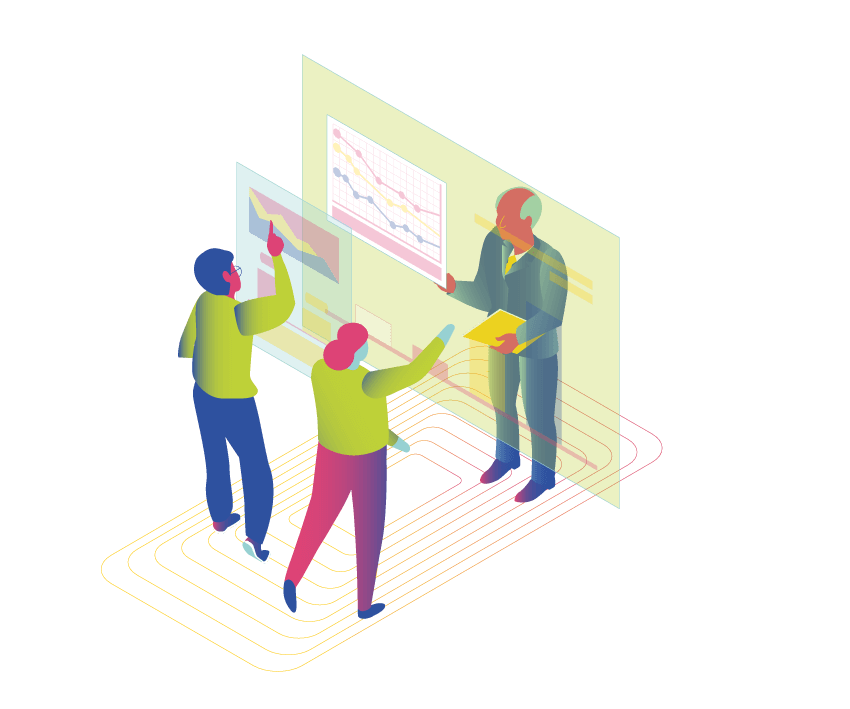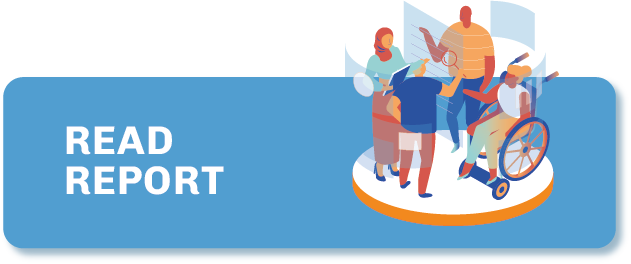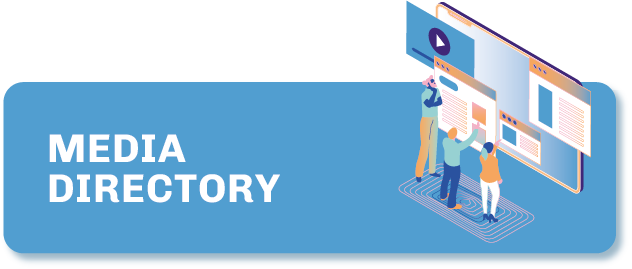About the Study
Learn more about how we conducted this investigation, our research methodology, and the questions we asked media leaders.

The work represented in this first version was launched on 18 April 2023 based on research conducted from June to December 2022 by our research team, working closely with our partners. They began by identifying more than 1,000 digital native outlets for potential inclusion. Of these, more than 650 were selected based on our criteria for inclusion. The research team then conducted interviews with media leaders and reviewed publicly available information to create the 540 media profiles that are featured in the first version of the directory.
The trends, insights and other information presented in our report are based on our analysis of this selection of media outlets, and the information they provided us with during the research phase.
It’s important to note that this report and media directory do not represent a final, exhaustive list of all of the independent digital media in Europe. This first version of our work represents our “minimum viable product” (MVP), and the first step of an ongoing research project that we plan to continue to develop over the coming months and years.
In early 2022, SembraMedia’s team began working with our partners in Europe to identify relevant previous research and initiatives that could inform us about independent digital native media outlets in Europe and beyond.
This early research included the European Journalism Centre’s 2018 – 2021 Engaged Journalism in Europe Database, Nesta’s 2016 research and report Hyperlocal Revenues in the UK and Europe: Mapping the road to sustainability and resilience, Dr Clare Cook’s work on revenue models and business viability for independent media, the Project Oasis research and mapping of digital native news organisations in the United States and Canada, and SembraMedia’s 2021 research and report Inflection Point International: A study of digital media entrepreneurs in Latin America, Southeast Asia, and Africa, and 2016 – 2017 research and report Inflection Point: Impact, threats, and sustainability – a study of Latin American digital media entrepreneurs.
Other notable research or mapping initiatives that have inspired and informed our work on Project Oasis include The New Sector database and report on independent public interest journalism in Europe (published in May 2022), Reference – the European Independent Media Circle, a self-organised, pan-European network of independent public interest media organisations launched in late 2021, as well as the Public Interest News Foundation Index of Independent News Publishing in the UK (2021).
Identifying which countries we would include in this study was complicated, because which countries are part of Europe is a highly contested topic, varying across economic and political perspectives. In order to select countries for inclusion in this study, SembraMedia and the project partners first compiled a master list of the primary databases available. These included the Council of Europe, Nations of Europe: Countries of Europe, the Schengen Visa list of European countries, the list of European Union countries, the European Economic Area, the European Free Trade Association, and European Neighbourhood Policy countries.
This provided a list of 64 countries that were considered for inclusion. Countries were not included in the study if their total population was below 80,000 according to Schengen Visa information dated 2020.
Countries were also omitted if they appeared on fewer than two of the databases noted earlier in this section. This delineation was used to create the broadest possible understanding of countries that make up a diverse and inclusive understanding of Europe, while also keeping the study within a practical and manageable size.
The preparation phase was followed by defining the research criteria, including what types of media should be included or excluded, and how we define digital native media and other specifications. The selection criteria was used by the researchers and management team as they evaluated media to be included in this study. The recommendations list was used as a guide for digital native publishers to follow, and also supported the selection process. Subsequently, we established what types and formats of questions we would ask of research participants.
Research and directory criteria
In order to achieve the project’s mission and purpose, we sought out and prioritised independent, digital native media organisations that serve the public interest with news, investigative journalism, fact-checking or other information services. Special attention was paid to finding new voices and media that cover news deserts and underserved communities.
To complement the study’s criteria for inclusion, and encourage generally recommended best practices, we also included a list of recommendations for independent digital native media outlets, such as publishing a mission statement on their website, a comprehensive “about” and “team” page, as well as policies regarding data privacy, corrections, editorial ethics and other related documents.
Although we prioritised the inclusion of media outlets that met all of our criteria and recommended best practices, we did make exceptions when adhering to these criteria could cause legal, physical or other threats to the founders, leaders, editors, or journalists of these organisations.
The directory is a living database, which we hope to continue to update and develop over the coming years. Our goal is to provide a foundation for identifying new kinds of media that serve the public interest, while not excluding media that are so new or so innovative that they do not meet all of the traditional criteria other organisations may use in these types of assessments. We welcome feedback as this project evolves, and expect to continue to refine and build on these criteria and recommendations in the future.
How digital natives were selected
To identify independent digital native outlets, SembraMedia hired and trained 34 researchers with experience in the countries they worked in to analyse the independent digital media sector between June and December 2022. The researchers worked with a team of three regional managers to draw up initial media lists for each country based on the inclusion criteria. Each media list featured between five and 40 digital native media organisations.
We aimed for our media lists to be diverse, encompassing different types of geographical coverage, reach, business models and publication platforms. The proposed media lists were then reviewed by the Project Oasis management team and by the project partners.
How data was collected
Prior to starting the data collection process, all project materials (including the questionnaire and criteria for inclusion), as well as SembraMedia’s privacy policy and its websites, were reviewed and vetted by the law firm Legal Army to ensure compliance with GDPR standards.
All data collected, including limited private data and information, has been safely stored in a secure database that is only accessible to the SembraMedia team.
Once the media lists were finalised, researchers contacted media leaders with a request for participation. Each media leader confirmed their interest in being part of the study through an informed consent agreement that detailed the data collection storage process, and our privacy policy. Researchers subsequently conducted one-hour phone or Zoom interviews using the project questionnaire. Data from interviews was recorded in writing, and researchers produced standardised profiles of each media outlet, publishing them in the interactive media directory using a custom-built version of Wagtail, an open-source content management system.
In many cases, interviews were conducted in local languages, and researchers translated the information with support from the regional managers where needed.
Although participants were informed that much of the data we collected would be included in a publicly available website, participant responses that encompassed business-sensitive and identifiable personal data – especially pertaining to section six of the questionnaire – have only been incorporated into this report as aggregated and anonymised data, and are not visible on the public website.
In some cases, researchers were unable to secure interviews with media leaders due to time or availability constraints. To ensure that media organisations we deemed especially relevant were included in the database, researchers compiled shorter profiles for about 90 of the media outlets, based on publicly available information.
Researchers also produced 43 narrative country summaries, which provide a snapshot of the media landscape in their country, as well as key findings from their interviews.
How data was processed and analysed
SembraMedia’s data analysts processed the data and developed the findings and insights included in this report. Additional data analysis support was provided by the report’s lead writer and the management team. Their biographies are included in the Who we are page along with the rest of the team that worked on this project.
The analysts spent several weeks exploring, normalising and anonymising the data (where applicable). Where figures in local currencies were obtained during interviews, the researchers used the online currency converter Oanda to convert and store the information in the media profiles and country summaries in euros (€).
Data was processed using Power BI, an interactive data visualisation software product developed by Microsoft. Once prepared, data was uploaded into Google Sheets for further calculations using pivot tables, and general comparisons. More complex analysis was done in Power BI.
The analysts took a multiple-step approach towards data review and analysis, which included a primary exploratory analysis and a hypothesis validation step. First, they collected questions from the research team and tested them against the data available. In the cases where data pointed us towards a significant finding, we followed up with a hypothesis verification test. In some cases, the analysts went back to the regional managers and researchers with follow-up questions to verify data points that appeared inconsistent or incomplete.
We used the Pearson correlation coefficient (r) to verify our hypotheses. The Pearson correlation method is the most common method used for numerical variables; it assigns a value between −1 and 1, where 0 is no correlation, 1 is total positive correlation, and −1 is total negative correlation. This is interpreted as follows: a correlation value of 0.7 between two variables would indicate that a significant and positive relationship exists between the two. A positive correlation signifies that if variable A goes up, then B will also go up, whereas if the value of the correlation is negative, then if A increases, B decreases.
To create the data visualisations in the report, we used Looker Studio (formerly Google Data Studio), a free, web-based data visualisation tool which helps build customised dashboards, graphics and reports.
To provide other points of comparison and benchmarks to the data we collected, we also included data from other sources. For example, we compared some of our findings with open datasets from the Reporters Without Borders (RSF) Press Freedom Index and from Internet World Stats.
Anecdotal data and empirical data
Country summaries
After completing the media profiles for the directory, the researchers created a summary for each country featured in the report. They followed a template and guidelines to standardise the information for all countries. The guidelines prompted researchers to identify key points of information, including:
- General country information, including country population, internet penetration and RSF Press Freedom Index ranking;
- An introduction, comprising one to two key findings or trends for the country;
- The overall media landscape, comprising information on press freedom, market structure and dominance, and general information about how media across the entire market is funded;
- The digital media landscape, elaborating on the key findings/ trends indicated in the introduction (including any opportunities and challenges for digital native media, quotes from media leaders, information about partnerships/ collaborations, reasons for being established etc);
- A conclusion of two to three sentences, comprising key takeaways or general recommendations.
The information under point one as mentioned above is based on quantitative data, but the majority of the information contained in the country summaries is anecdotal. Some of the qualitative data from the country summaries was also included in the main body of the report.
Questionnaire/ interviews
We encouraged media leaders to answer our questionnaire as completely as possible. However we did not make all questions mandatory, and in some instances interview participants chose not to answer all questions, especially when these contained information they considered sensitive. Participants were especially reluctant to answer questions about traffic numbers, annual revenue, annual expenses and starting capital for the organisation, even though they were assured that revenue, expenses and starting capital would be kept private and only anonymised, aggregated data would be shared in the report. In a few cases, founders requested that their names not be shared publicly in the directory or report due to safety or legal concerns. In the majority of these cases, it was because these media leaders were operating their media organisations in exile.
A small number of media outlets we reached out to refused to take part in the study at all, citing privacy concerns, lack of time or interest in taking part in a research study. Some media leaders noted that they had already taken part in other studies and that they did not have time.
As a result, the data analysis and insights in the report are based on the sample available, which may not necessarily be the total number of media profiles included in the directory. The percentages or numbers of respondents that the insights are based on are clearly highlighted in the text.
During interviews, we also collected full-time equivalent (FTE) data regarding the media outlets’ monthly average number of employees by area or department (for example, content production, business development and/ or sales etc). Due to the use of FTE not being prevalent in all the countries where we interviewed media, thus leading to some challenges in estimations, we have decided to limit the use of this data in the analysis and the report in order to favour accuracy.
In some countries, the data is limited because we found few media outlets that qualified based on our criteria.
Annual revenue
In regard to data relating to annual revenue, participants were asked to provide revenue information for the latest full financial year applicable to their organisation for which they had complete financial data. We primarily collected annual revenue figures for the 2021 financial year. However in a dozen instances, media leaders were only able to provide annual revenue numbers for 2020 or 2022. For analysis purposes, we ensured these outliers did not have a disproportionate impact on the data, and we aggregated and anonymised figures from all three financial years.
Country summaries
Although we provided all of the researchers with a template and guidelines, in order to standardise the information for all countries, we also gave them a fair amount of autonomy. As a result, not all summaries incorporate the same information, or the same level of detail. This, in part, was due to limited publicly available data about certain countries, and in part due to researchers having a degree of autonomy to interpret the guidelines, based on the local market conditions in which they were working.
Because we were unable to hire a researcher in Iceland, there is no summary for that country.
To read the full Project Oasis questionnaire, please click here.
The Project Oasis questionnaire consists of 66 questions, across six different sections including 1) general organizational information, 2) content production and distribution, 3) audience and reach, 4) management and team, 5) business structure, finance and revenue sources, and 6) private data and information.
It is important to note that participant responses that encompassed business-sensitive and identifiable personal data – especially pertaining to section 6 – have been incorporated into this report as aggregated and anonymised data. Such data, however, has not been included in the directory.
To read the full questionnaire, view this PDF.

